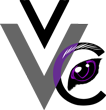Glaucoma is a disease that causes damage to the optic nerve, a vital eye structure for maintaining vision. While horses tend to adapt well if they lose sight in one or both eyes, this situation is not ideal. Our team at Veterinary Vision Center wants to help you understand this condition in case your horse is affected.
How does glaucoma affect a horse’s eye?
In equine patients, glaucoma damages the optic nerve through elevation in the intraocular pressure (IOP). Normally, a small structure inside the eye, called the ciliary body, produces aqueous humor that provides nutrition and support to the internal eye structures. This fluid flows from the back part of the eye, through the pupil, to the front part of the eye, and is then drained from the eye through either the uveoscleral pathway or the iridocorneal angle, a mesh-like structure. IOP depends on the balance of aqueous humor production and outflow. In glaucomatous eyes, the IOP has reached a level incompatible with eye health. Elevated IOP results in decreased blood flow and nutrient movement through the optic nerve, ultimately causing retinal cell death, excess pressure on the optic nerve, and blindness.
What causes glaucoma in horses?
Three glaucoma categories—congenital, primary, and secondary—have been described in horses. Congenital glaucoma is present at birth and, unfortunately, rarely responds to therapy. However, this form is not commonly seen in horses. Primary glaucoma is a bilateral, inherited condition that occurs when the aqueous humor outflow system malfunctions. This form is also rarely seen in horses. Secondary glaucoma is, by far, the most common category observed in horses. The increased IOP in these horses is caused by damage to the eye by a concurrent intraocular disease, such as equine recurrent uveitis (ERU), lens luxation, corneal perforation, or an intraocular tumor. ERU is the most commonly diagnosed primary disease in glaucomatous horses.
How does equine recurrent uveitis affect horses?
ERU is a complex autoimmune disease influenced by environmental and genetic factors. Appaloosas are at higher risk for developing ERU, and are also more likely to become blind. ERU has three syndromes:
- Classic — This is the most common form, and is characterized by intermittent eye pain and inflammation.
- Insidious — This form is characterized by persistent, low-grade inflammation. Horses usually show no outward indication of pain, but ocular tissue is still degraded, resulting in blindness.
- Posterior — This form is characterized by inflammation in the back of the eye, causing retinal degeneration.
What are clinical signs seen in glaucomatous horses?
Horses affected by glaucoma can exhibit varying signs, with some horses showing no evidence of a problem. Signs may include:
- Squinting
- Tearing
- Cloudy cornea
- Bloodshot appearance to the eye
- Bulging eye
As the condition progresses, damage to the optic nerve will result in vision loss, pupil dilation, and possibly a blue cornea. Secondary problems, such as corneal ulceration and lens luxation, may occur.
How is glaucoma diagnosed in horses?
A veterinary professional will need to perform a thorough ophthalmic exam. The IOP will be measured using an instrument called a tonometer. The horse’s eye will be anesthetized, and a nerve block performed, to prevent the horse from blinking. Horses usually are not sedated for this procedure, since the drugs can influence the IOP reading. Several readings using the tonometer will be taken, to ensure an accurate measurement. Normal IOP for horses is 20 to 30 mmHg. At Veterinary Vision Center, a gonioscopy may also be performed, to evaluate the horse’s iridocorneal angle.
How is glaucoma treated in horses?

Horses tend to respond well to glaucoma treatment, especially if treated in the early stages. Prescription medicated eye drops are available that reduce aqueous humor production and increase aqueous humor outflow, resulting in decreased IOP. If glaucoma is secondary to equine recurrent uveitis, this condition will need appropriate management before the glaucoma can be effectively addressed. Oral anti-inflammatories and topical steroids are typically needed to reduce active inflammation. Surgical intervention may be necessary if the horse is not responding to treatment. Two procedures are used to address glaucoma:
- Cyclo photoablation — By partially ablating the ciliary body, aqueous humor production is decreased. This procedure can be done with the horse standing or under general anesthesia, and is performed using a diode laser trans-sclerally, or an endoscopic probe. Highly accurate lasering is possible to maximize ablation of the fluid-producing cells, while minimizing peripheral damage. For several days post-surgery, the IOP may be elevated, because the procedure results in inflammation in the eye. Once the inflammation resolves, horses can experience decreased IOP levels for months or years.
- Gonio valve implantation — A tube-like device is surgically implanted to increase aqueous outflow and divert the fluid subconjunctivally. This technique is not used as frequently in horses as cyclo photoablation.
If treatment fails, the horse’s eye becomes painful and must be addressed. Removing the eye (i.e., enucleation) can eliminate the pain, and horses usually acclimate well to losing an eye.
By diagnosing glaucoma in the early stages, the condition can be managed, decreasing your horse’s pain, and slowing their vision loss. If you are concerned your horse has ERU or glaucoma, do not hesitate to contact our team at Veterinary Vision Center to schedule an appointment.







Leave A Comment